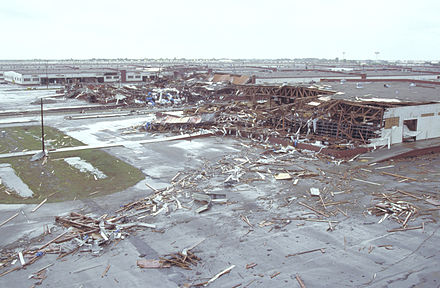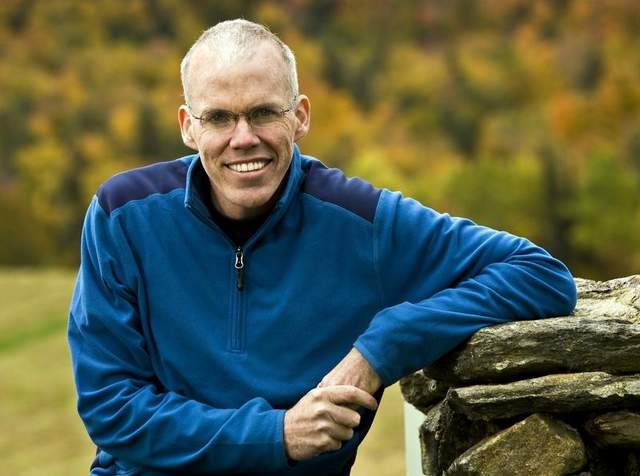From New Yorker

Hurricane Gilbert aftermath
(Image by Wikipedia (commons.wikimedia.org), Author: TSGT Michael J. Haggerty, U.S. Air Force) Details Source DMCA
Central America has been through a wet version of Hell these past few weeks, as first a Category 4 and then a Category 5 hurricane crashed into the same part of Nicaragua's Caribbean coast, dumping crippling amounts of rain on that country, Guatemala, and Honduras. Delphine Schrank opened an account of the toll on Honduras's second-largest city, San Pedro Sula, for the Washington Post with this anecdote: "Blanca Costa crouched on a wooden cart with her three daughters under a highway bridge...The cart was the one possession Costa was able to save when they clambered out [of their flooded house]. The three horses that pulled it, enabling her to earn money as a trash collector, were gone. It would take years, she said, to save enough to buy another one."
It goes without saying that Costa and her daughters had done nothing to cause the increase in global temperature that, in turn, allowed massive late-season hurricanes to form in their corner of the Atlantic. And it goes without saying that Honduras will now have an even harder time paying for a changed energy system to help it convert to clean energy, as its commitments set in the Paris climate accord envisionits cobbled-together a reconstruction plan is unsurprisingly focused on rebuilding the bridges and roads that the storms destroyed.
Such intuitions about blame and responsibility have usually been offered in airy moral terms, but a new report released on Wednesday puts them into numbers. The analysis, from the activist group U.S. Climate Action Network, draws on the work of Tom Athanasiou, at a California-based nonprofit called EcoEquity, and his colleagues at the Climate Equity Reference Project. It tries to calculate how much of the burden each country should be bearing, based on its historical contribution to the cloud of greenhouse gases and its "capacity to pay"-- a reflection of how rich the nation became during the fossil-fuel era. The report finds "that the US fair share of the global mitigation effort in 2030 is equivalent to a reduction of 195% below its 2005 emissions levels, reflecting a fair share range of 173-229%." That is, we can't meet our moral and practical burdens simply by reducing our own emissions; we've already put so much carbon into the air (and hence reduced the space that should rightly go to others) that we need to make amends. Of this 195-percent reduction, Athanasiou says, 70 percent would be made domestically, by building solar panels, rolling out electric cars, and insulating buildings. "This is about the maximum achievable by 2030, though cuts of this magnitude would require a full Green New Deal war footing," he notes. "The rest -- the other 125% -- would come by way of financial and tech support for adaptation and rapid decarbonization in poor and developing countries."
For the past year, nations (and companies) have been announcing plans to reduce their emission levels to zero by mid-century. As Athanasiou says, that's a welcome development, but, he adds, "Not one of these countries has made anything like an adequate move to support ambitious decarbonization and adaptation plans in the developing world. Or even, despite lots of talk, to significantly cut fossil subsidies. In fact, as I'm sure you know, a lot of the covid recovery money has gone to the fossils."
A country like Honduras has not used anything like its fair share of the planet's carbon budget. By decarbonizing, it will be doing far more than its fair share -- and it won't be able to, unless countries like the United States help foot the bill. That is the only honorable, and only sensible, course: they don't call it global warming for nothing, and you can't control it anywhere without controlling it everywhere. Our political debate has poisoned the idea of foreign aid in recent years, and it will be a hard lift for the Biden Administration to come close to meeting the requirements of justice. But it won't be as hard a lift as Blanca Costa is facing these next few years, pulling a trash cart without her horses.
Passing the MicLynne Quarmby is a professor of molecular biology at Simon Fraser University, in British Columbia. She is also a veteran of many environmental campaigns, and the author, most recently, of "Watermelon Snow: Science, Art, and a Lone Polar Bear." The title refers to the way that algal blooms can tint a snowpack pink. (Our interview has been edited for length and clarity.)
I first saw watermelon snow high in the backcountry of Yosemite. What is it, and why should we be paying attention?
From spring through summer, single-celled algae grow on alpine and polar snow. In full bloom, the snow can look like watermelon flesh. White snow reflects solar radiation, whereas colored snow absorbs more of that energy, causing more melt and algae growth. Whether, on balance, the algae exacerbate global warming by absorbing heat, or mitigate it by pulling carbon dioxide from the atmosphere during photosynthesis, we don't yet know. The more pressing issue may be that algae blooms speed the melt of alpine snowpacks -- freshwater reservoirs for many cities -- spelling drought later in the season.
Under the microscope, the algae look like small jewels -- diamond-encrusted rubies, sapphires, and emeralds. Together with the algae, we find rotifers, tardigrades, and ciliates, their bellies full of red cells; fungi with three arms; and slime, teeming with bacteria, archaea, and viruses. From microbial communities like these, we are learning that evolution is as much about cooperation as it is about competition. My concern is less about whether the algae are "good" or "bad" with respect to climate change than about the imminent extinction of this microscopic Serengeti.
(Note: You can view every article as one long page if you sign up as an Advocate Member, or higher).





